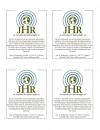Article #1 from Volume 1, Issue 2: The Many Places of Immigration
"Sex Trafficking"
Janice Goh
It is ironic that with the medical and technological advances of today, HIV is still a growing epidemic. Out of the 42 million people infected with HIV in 2006, the epidemic took the lives of 2.9 million in the world. In the last year 4.3 million adults and children were newly infected. What then leads to the spread of this affliction? As it turns out, there exists a high correlation between HIV and the incidence of sex trafficking; most of these people are not just victims of HIV, and of sex trafficking.
Sex trafficking is defined as the recruitment, harboring, transportation, or obtaining of a person for the purpose of a commercial sex act. Many women are trafficked each year and are subject to commercial sex exploitation. Sex trafficking not only increases the risk of HIV to victims, trafficking is also a common means of spreading HIV. Due to the high incidence of unprotected sex, lack of proper sanitation and general health awareness, sex trafficking has been aiding the global dispersion of HIV.
In Bangladesh, for example, condom use among Bangladesh’s 36,000 sex workers varies between a mere 4% to 28% and over 95% of teenage Bangladeshis do not know a single method of HIV prevention.
In South Africa, 70% of the women in prostitution are infected with HIV, and 70% of the 20,000 Burmese prostitutes are HIV positive.
Although sex trafficking is a principle catalyst for HIV, the causal relationship between the two phenomena is actually mutual. The rise in HIV in Southeast Asia has since increased the demand for younger girls, based on the belief that younger, virgin girls are less likely to be infected with any form of disease.
Today, prostitutes as young as 5 years old can be found in countries like Cambodia, Thailand and Vietnam. Consequently, this has further triggered the rise in HIV in Southeast Asia, especially amongst children. In 2006 UNICEF estimated that at least 1 million children in Southeast Asia suffer from HIV.
Given the high correlation between HIV and sex trafficking, why then is sex trafficking so prevalent in numerous areas in the world? Sadly, forces of supply and demand have been fuelling this global phenomenon. The lack of job and educational opportunities that plagues women in rural areas renders them vulnerable as victims of trafficking. Being illiterate and impoverished, women are easily misled or coerced into trafficking with false promises of job opportunities.
Further, sex tourism encourages the trafficking of women to fulfill the needs of clients. In return, the profitability from sex tourism promotes the development of sex establishments to attract tourists. Japan, for example, runs a $9 billion sex industry and is home to 10,000 commercial sex establishments. Japan’s flourishing sex industry is in turn a destination for the 150,000-200,000 women trafficked from Southeast Asia.
International action has been taken to combat sex trafficking by raising awareness of the issue. The International Labor Organization, Coalition Against Trafficking of Women, United States Agency for International Development and United Nations Development Fund for Women are some of the organization that play important roles in strengthening prostitution laws in many countries. The US government is also involved in many initiatives such as participating in the negotiation of the protocol on trafficking.
Labels: human rights, immigration, janice goh, newsletter, sex trafficking, university of washington, uwjhr







